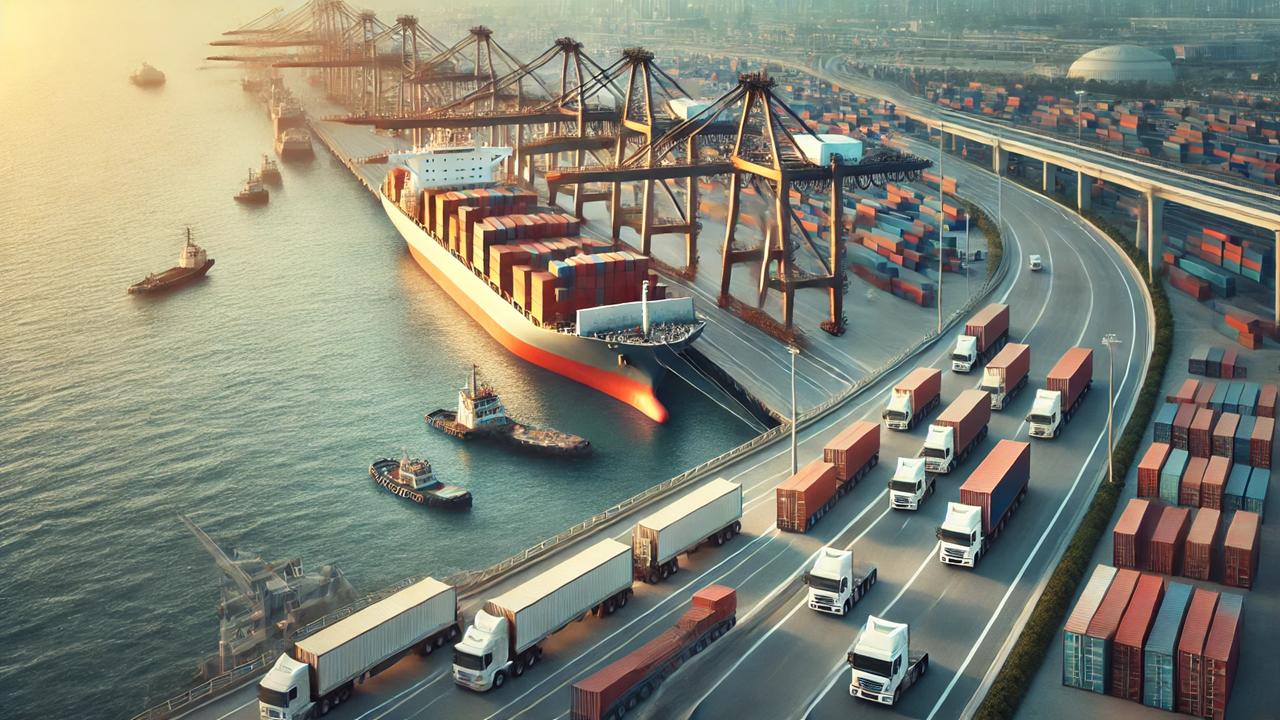Bridging the Transport Gap: Lowering Costs to Boost Growth in Developing Nations
The World Bank’s report, “Shrinking Economic Distance: Understanding How Markets and Places Can Lower Transport Costs in Developing Countries,” explores the factors contributing to high transport costs in developing nations. It highlights how poor infrastructure, regulatory barriers, and market inefficiencies inflate costs, limiting global competitiveness. The report emphasizes the need for better infrastructure, deregulation, and market competition to bridge the gap and foster sustainable economic growth.

Transport costs in developing countries are far higher than in wealthier nations, often hindering economic growth and global trade competitiveness. Despite technological advancements and infrastructure development, inefficiencies remain, particularly in markets like trucking and ports. A new report, “Shrinking Economic Distance: Understanding How Markets and Places Can Lower Transport Costs in Developing Countries,” published by the World Bank, delves into the complexities behind these costs and offers solutions to address the challenges emerging economies face.
Understanding the Economic Distance
Economic distance, which is the cost associated with moving goods from one point to another, is a major concern for policymakers in developing nations. These costs are influenced by multiple factors, including geography, infrastructure quality, regulatory frameworks, and market structures. According to the report, transport prices in developing countries can be up to 14 times higher than in developed ones. This disparity impacts both international and domestic shipments, making it difficult for businesses to compete in global markets.
While the overall global trend has seen a reduction in freight costs, the benefits have not been evenly distributed. A shipment from a low-income country to the United States can be 50% more expensive compared to a high-income nation shipping the same goods over a similar distance. Moreover, this disparity exists not only for international shipments but also within countries, where poor road conditions and infrastructure lead to inflated transport costs.
The Impact of Infrastructure and Market Efficiency
The quality of infrastructure, particularly highways and ports, plays a critical role in determining transport costs. Efficient, high-quality infrastructure can reduce the friction of distance, enhancing connectivity and reliability. Conversely, poor-quality infrastructure exacerbates travel times and adds to operational costs, making the economic distance even more pronounced.
Take road infrastructure, for instance. In many low-income countries, a lack of well-maintained highways means that trucks spend more time navigating rough terrain, leading to higher fuel consumption, increased wear and tear, and, consequently, higher freight costs. Similarly, port inefficiencies—caused by inadequate facilities, lack of modern technology, and regulatory bottlenecks—result in extended waiting times for ships, which in turn inflates maritime shipping costs.
According to the report, improving port performance alone could reduce shipping costs by up to 37% in some developing countries. By focusing on enhancing infrastructure quality and operational efficiency, nations can lower these costs significantly, making them more competitive in global markets.
Regulation and Competition: A Double-Edged Sword
Regulation in the transport sector is often a double-edged sword for developing economies. While rules are meant to standardize operations and ensure safety, excessive regulations can stifle competition and create monopolistic practices that drive up costs. In many regions, trucking associations and unions wield significant power, controlling access to cargo and influencing price regulations. This lack of competition is a major factor behind high domestic transport costs.
The report highlights that deregulating the trucking sector has been successful in several countries, resulting in increased market entry, lower costs, and better service quality. However, deregulation must be accompanied by policies that support fair competition, as consolidation and market power in the hands of a few players can lead to price manipulation and reduced benefits for shippers.
Ports, too, suffer from similar issues. In countries where a single operator controls the entire port infrastructure, shipping companies have little choice but to accept high fees and inefficient service. Introducing competition within and between ports, promoting private-sector participation, and fostering transparent operational practices are key to lowering these costs.
Addressing Empty Runs and Logistics Imbalances
One of the most pervasive issues in developing countries is the prevalence of empty runs—trucks or ships returning without cargo. This inefficiency is driven by a combination of regulatory barriers, poor coordination, and economic imbalances between regions. For instance, trucks delivering goods to a rural area with low economic activity are often unable to find a return load, resulting in a 50% cost increase for the initial shipment to cover the empty return leg.
The report suggests that countries should invest in digital logistics platforms and aggregation centers that can match supply and demand more effectively. These systems would enable transporters to plan routes better, reducing empty runs and lowering overall costs. Additionally, improving market access in underserved regions can boost demand, making it more attractive for transporters to serve these areas.
Crafting a Path Forward
The overarching message from the report is clear: lowering transport costs requires a combination of efficient infrastructure, competitive markets, and robust policy frameworks. Countries need to focus on creating an environment that promotes competition, reduces logistical friction, and supports the development of reliable transport networks.
The report offers several policy recommendations, including,
- Strengthening competition through deregulation and promotion of private-sector participation.
- Developing climate-resilient transport infrastructure and managing its operations effectively.
- Creating efficient places by integrating multimodal transport and logistics hubs.
- Enhancing policy frameworks to address market failures and reduce logistical frictions.
By following these recommendations, developing countries can reduce their economic distance, foster greater trade integration, and ultimately achieve sustainable economic growth. Efficient, high-quality transport networks not only boost economic welfare but also contribute to global decarbonization goals by reducing emissions from transport inefficiencies.
- FIRST PUBLISHED IN:
- Devdiscourse
ALSO READ
CII Urges Balance in Fiscal Targets for Economic Growth
Rising Rajasthan Summit Set to Boost Employment and Economic Growth
ADB Approves $350M Loan to Boost India’s Logistics Sector and Economic Competitiveness
ADB's $350M Boost to Revolutionize India's Logistics Sector
India's Logistics Sector: A Pathway to Efficiency and Sustainability










